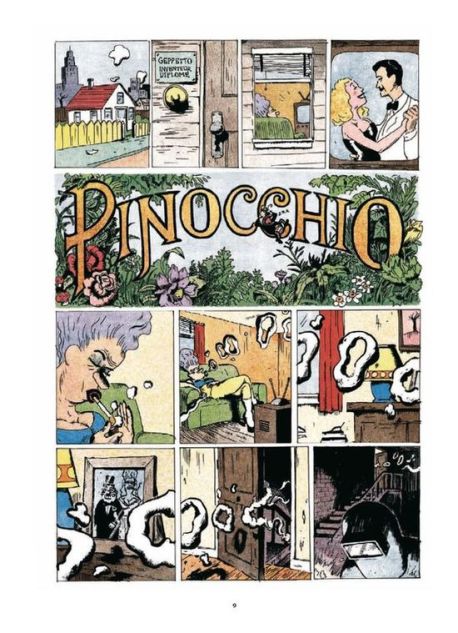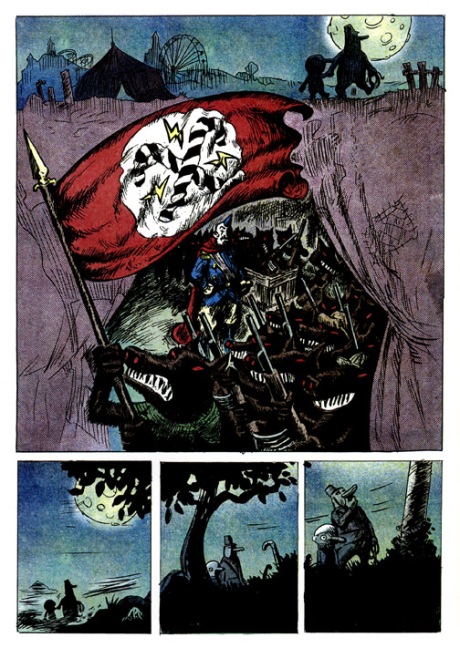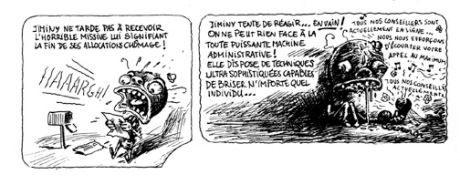
[Editor’s Note: We’re crossposting this entry from (Parsons Alum and Adjunct Faculty) Les Kanturek’s Sophomore Concepts blog. ]
Pinocchio, by well known French comix artist Winshluss was awarded the Fauve d’or (best comic book prize) at the 37th Angoulême International Comics Festival in France this year. Winshluss, is the pen name of Vincent Parannaud who might also be familiar to some as co-director (with Marjane Satrapi) of the animated film Persepolis.

In Pinocchio, Winshluss has created a wonderfully dark, comic noir interpretation of Carlo Collodi’s classic children’s story. The artwork is primarily done in pen and ink, and watercolor but switches to paint for larger splash panels. He references a terrific range of illustrative styles and history in the story from late 18th century pen and ink, to early French film pioneer Georges Méliès , through early Disney, and underground comix.


Though Disney’s 1940 animated Pinoccho seems to have become the definitive version here in the U.S., Winshluss’ work is much closer to Collodi than Disney in spirit. Like Collodi’s originally serialized story of the wooden marionette, Winshluss’ updated version was first published serialized as chapters in Ferraille Illustré, a French comics journal. Winshluss’ graphic novel is an adult noir movie that at times is both comedy and tragedy. The narrative begins with a shooting, and then flashes back to Pinocchio’s creation (he is now a robot-like android) and adventures. Collodi’s original story is also darker (Pinocchio is hung, Jiminy Cricket is killed…) than Disney’s version. Both versions portray Pinocchio going from one manipulative situation to another. Winshluss has also injected politics into his story which also played a part in Collodi’s original.

The Angoulême site described the book as an “Opera”, which it is in its visual lushness and drama. For the most part, the book is wordless, with multiple characters’ points of view all adding to the sum of Pinocchio’s story. Jiminy Cafard (Cafard translates as cockaroach, as well as hypocrite and a feeling of severe depression)–Pinocchio’s companion–provides the most talking in the book. It seems appropriate and provides comic relief.

As of now Winshluss’ Pinocchio is only available in French (which won’t stop you from enjoying it even if you’re not a French speaker) and through overseas online merchants . Hopefully it will be distributed in the states in the near future.
Thanks, Les!